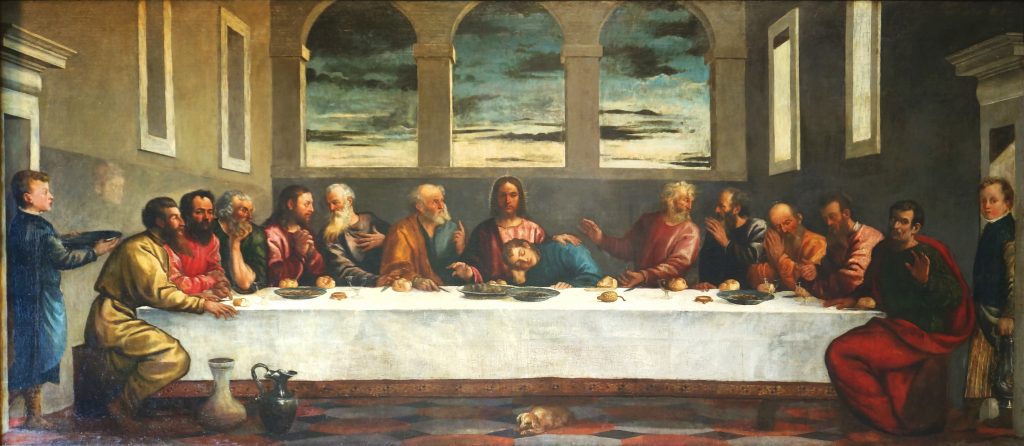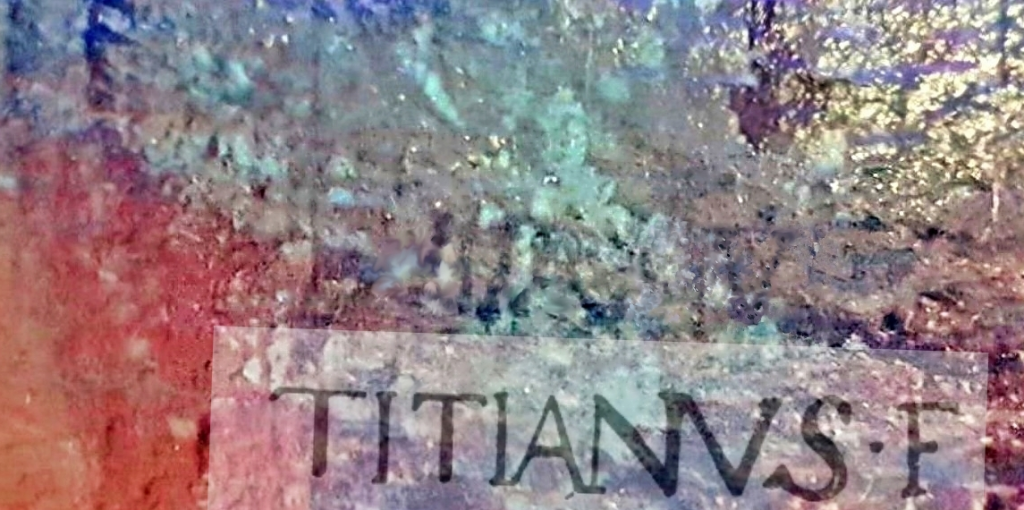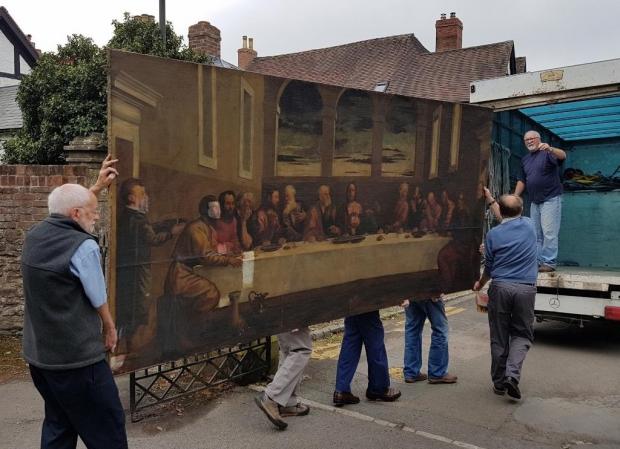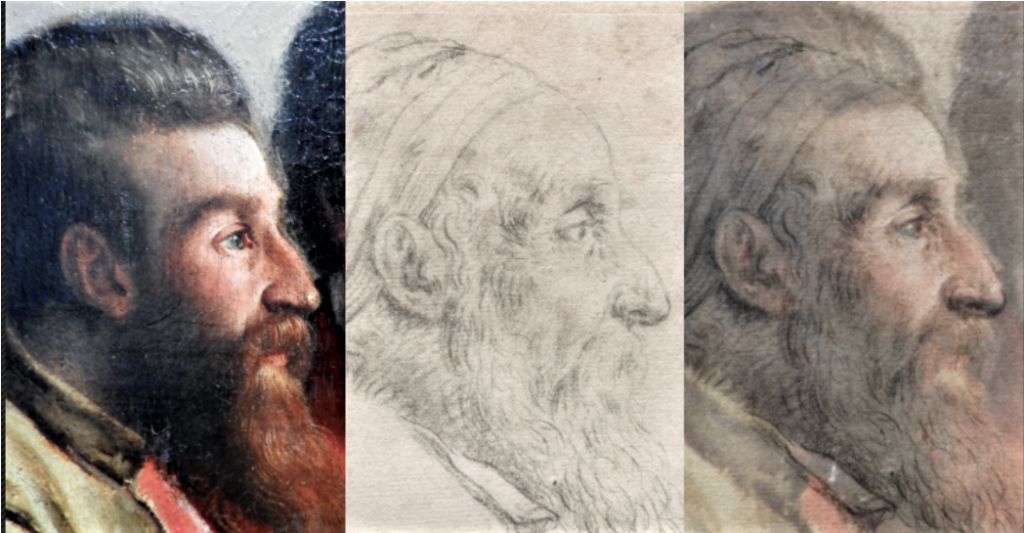Art World
An Art Historian Says He Spotted the Faint Signature of Titian on an Obscure Painting Hanging in a Small UK Church
Richard Moore says portraits of Titian and his family members are also part of the scene.

Richard Moore says portraits of Titian and his family members are also part of the scene.

Kate Brown

An art historian says he has identified a long-forgotten work from the workshop of the Venetian painter Titian that has languished in a church in a small UK town for more than a century.
Ronald Moore, whose research is detailed in a new book called Titian`s Lost Last Supper, a new workshop discovery, says the painting could contain underdrawing and composition work by Titian; and images of Titian’s sons, Orazio and Pomponio. He hypothesizes that there may be a portrait of a rival of Titian’s, Tintoretto.

Signature and Titian signature overlay. Photo: Patricia Kenny.
“It is a Titian workshop painting with, at most, underdrawing by Titian,” Moore told Artnet News.
Moore began working on the 12-foot-wide artwork, which had suffered a botched restoration in 1800 that caused it to dull, three years ago.
He says he and his assistant, Patricia Kenny, spent 11,000 hours researching and working on the painting. According to Moore, a collector named John Skippe bought the work from a Venetian family in 1775 and shipped it back to England. In 1909, his descendants donated the piece to the Ledbury church.
“A vital breakthrough was the discovery of Skippe’s notes referring to a Last Supper by Titian, signed and dated,” Moore says, adding that he located the tiny signature on a metal jug in the painting that became visible under UV light.

Last Supper being put on a lorry. Photo courtesy Ronald Moore.
As for the portraits of Titian and his sons, Moore says they could have been added after the artist’s death, alongside additional images of Titian’s nephew and his cousin. As evidence, he points to 1576, the year Titian died, inscribed above one of the portraits.
Charles Hope, the former director of the Warburg Institute and a specialist in Italian painting, says the work does appear to be a Venetian painting from the middle of the 16th century, but doubts whether Titian was personally involved.
Though he has not seen the work in person, he says there is mention in a painting guidebook published in 1674 of a Last Supper “from the school of Titian” in a church of the convent of the Convertite on Venice’s island of Giudecca.

First apostle and the underdrawing, which the restorers think is a self-portrait of Titian. Photo: Patricia Kenny.
“This convent was later closed, and I think the Last Supper from there might well be the Ledbury picture,” Hope says. “The fact that [the guidebook author] calls it School of Titian means that he was confident that it was not by Titian, but had no idea of who might have painted it.”
Experts in Italian painting from the National Gallery in London declined to comment. Representatives for the church in Ledbury did not respond to requests for comment by press time.